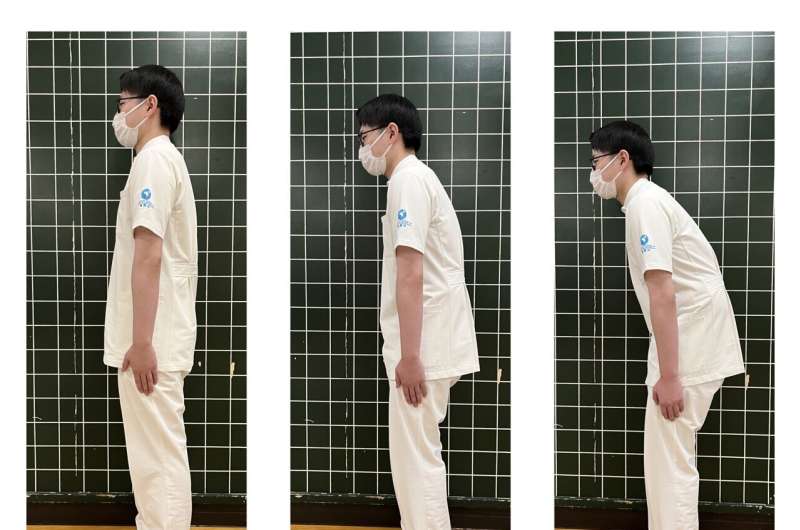Posture assessed in health exam detects cognitive decline

A mass survey of citizens aged 50 to 89 years examined whether cognitive decline could be detected by sagittal spinal balance measurement based on a radiological approach. Doctors from Shinshu University observed associations of sagittal vertical axis (SVA) anteriorization and higher age with lower cognitive function. The results of their study are published in Scientific Reports.
The sagittal vertical axis is the length of a horizontal line connecting the posterior superior sacral end plate to a vertical plumbline dropped from the centroid of the C7 vertebral body. The more the head and neck protrude in front of the pelvis when viewed from the side, the more likely subjects are to show symptoms of mild cognitive decline. In males, the SVA was associated with cognitive decline independently of age. In females, cognitive decline was more likely in cases of SVA that is equal or greater than 70mm regardless of age.
Mild cognitive impairment involves cognitive complaints from the individual or associates but no dementia. Dementia, frailty, and bedridden status may be prevented by catching mild cognitive impairment at a reversible stage in communities where expensive special testing equipment or additional medical testing time is limited for the older population. First author Hikaru Nishimura is an occupational therapist who researches problems faced by the elderly from a rehabilitation perspective. Exercise training in older adults could prolong the extent of decline towards dementia or prevent it all together.
Corresponding author Doctor Shota Ikegami of Shinshu University states that poor posture is a manifestation of frailty in the elderly. Hidden cognitive decline, a component of frailty, can be detected by posture screening. Older adults in the town of Obuse, Nagano were examined for the mass survey and it was found that in Japanese older adults, those who exhibited anteriorization of the spine were more likely to also have cognitive function decline.
Cognitive decline was reliably detected by combining age and the degree of spinal imbalance. Males with SVA ≥ 100 mm at any age, SVA ≥ 90 mm at ≥ 70 years, and SVA ≥ 70 mm at ≥ 80 years were likely to have cognitive decline, while females with SVA ≥ 70 mm at any age were likely to have cognitive decline.
The prefecture of Nagano boasts some of the highest health longevity in Japan. With this study and others, doctors hope to prevent future need for care through rehabilitation interventions for frailty found during screenings.
More information: Hikaru Nishimura et al, Detection of cognitive decline by spinal posture assessment in health exams of the general older population, Scientific Reports (2022). DOI: 10.1038/s41598-022-12605-7


















